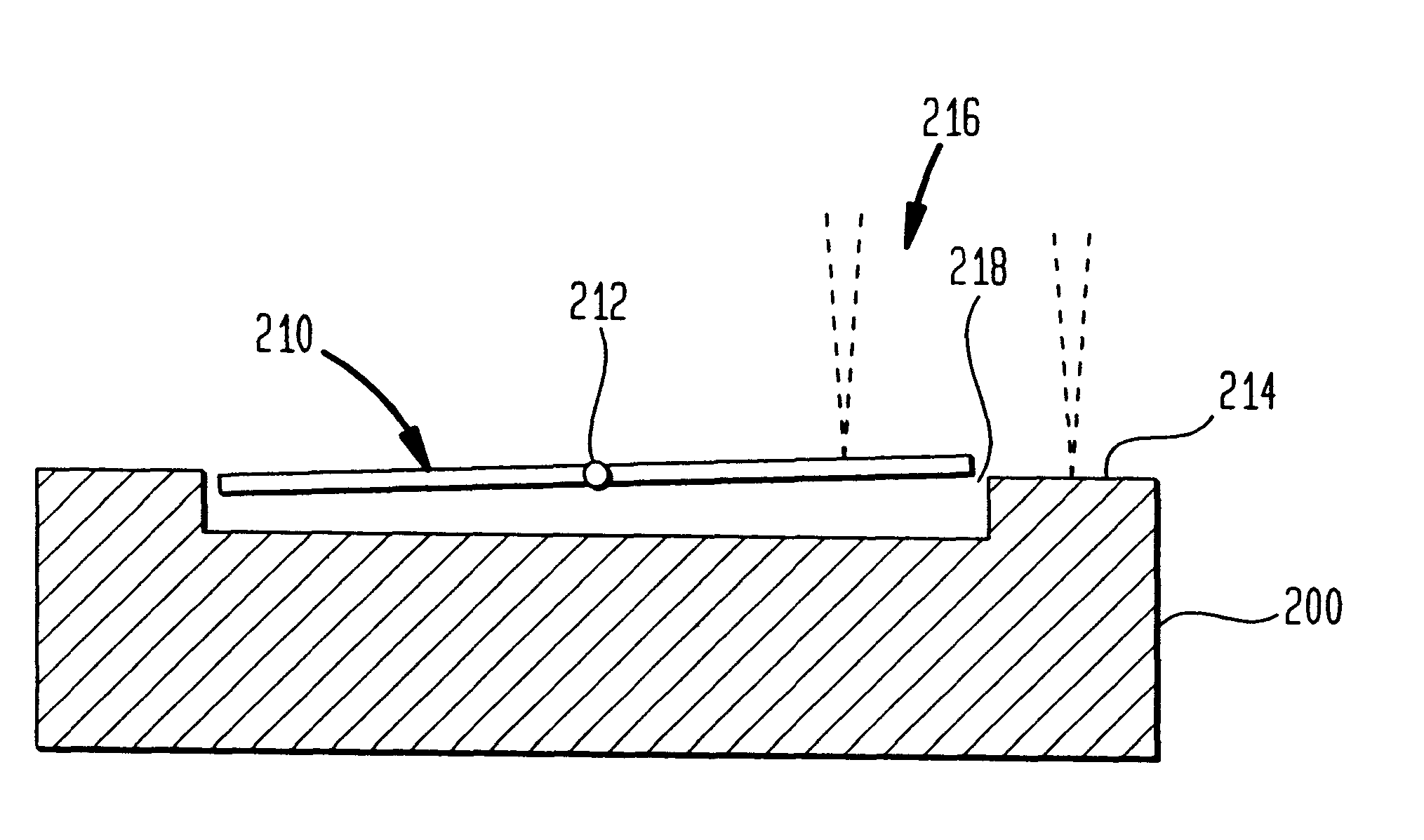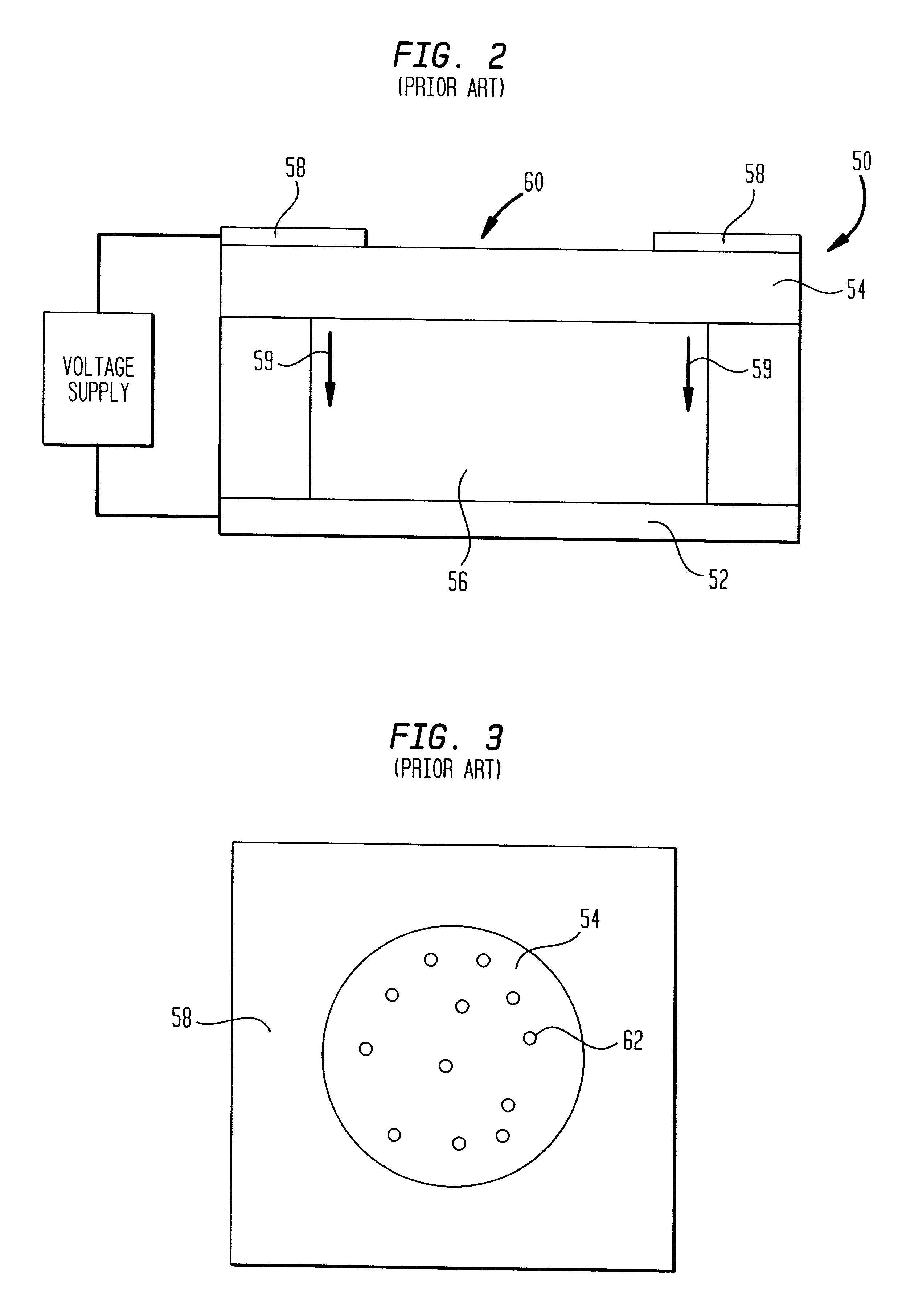Variable single-mode attenuators by spatial interference
a single-mode attenuator and spatial interference technology, applied in the field of variable attenuators, can solve the problems of false reading of optical signals, system error in detecting signals or inability to detect signals, and unreliable transmission of data
- Summary
- Abstract
- Description
- Claims
- Application Information
AI Technical Summary
Problems solved by technology
Method used
Image
Examples
first embodiment
FIGS. 5-7 illustrate different views of an attenuator according to the present invention. Referring to FIGS. 5-6, the reflective portions are divided by including a "large hole" 170 in the membrane 154 after coating the membrane with a high reflectivity (HR) coating. The floor 152 of the cavity is also coated with an HR coating. Note that it is not necessary to coat the entire regions indicated but only the regions that are illuminated by the incident beam, namely the middle region of the membrane 154 and the cavity floor 152 that is visible through the large hole 170. The illuminated area 172 (shown as a dotted circle) of the attenuator includes two portions or regions: (1) the crescent shaped area 174 on the membrane 154, and (2) the portion of the cavity floor 152 illuminated by the beam through the large hole 170. In a preferred embodiment, emphasizing high attenuations, the reflections from these two portions are approximately equal.
FIG. 7 illustrates the light reflection paths...
second embodiment
In a second embodiment, of the present invention reflective surfaces that are side-by-side are used in the attenuator as shown in, e.g., FIGS. 9 and 10, with one of the surfaces being moveable with respect to the other. Referring to FIGS. 9 and 10, the silicon chip 200 is seen from above and in cross-section, respectively. A moving surface 210, called a "see-saw" herein, pivots on torsion hinge mountings 212. As can be seen in FIG. 10, the right side of moving surface 210 is further away from the floor of the silicon chip 200 than the left side thereof. Maximum reflective coupling occurs for a light beam directed at the silicon chip 200 when the see-saw's top right edge is even with the top of the neighboring surface 214 of the chip 200; then the reflecting surface will appear to be an ordinary HR plane with a slight gap 218 (vertical slit) in the middle of the illuminated area 216. To maximize this coupling, the width of gap 218 relative to the light beam's diameter should be minim...
third embodiment
The sensitivity and symmetry of the attenuator can be improved by using two neighboring see-saws 220 and 222 as shown in, e.g., FIGS. 11 and 12 illustrates an attenuator according to the present invention. By directing the light beam 216 to straddle both see-saws 220 and 222 as shown, and applying the same forces to each one, twice the phase shift can be achieved.
Another group of variations comes from exploiting the transparency of silicon in the region of the infrared used for the variable attenuator. If the silicon is transparent and one (optionally) applies an AR (Anti-Reflecting) coating to the underside of the silicon chip and elsewhere as needed, one can make a variable reflective coupling through the underside.
It is not necessary for any of the designs to have the edges of the HR coatings be coincident with the edges of the holes or of the see-saws; the edges can be lithographically defined instead so that there is less danger of edge curling. The edges formed in this manner ...
PUM
 Login to View More
Login to View More Abstract
Description
Claims
Application Information
 Login to View More
Login to View More - R&D
- Intellectual Property
- Life Sciences
- Materials
- Tech Scout
- Unparalleled Data Quality
- Higher Quality Content
- 60% Fewer Hallucinations
Browse by: Latest US Patents, China's latest patents, Technical Efficacy Thesaurus, Application Domain, Technology Topic, Popular Technical Reports.
© 2025 PatSnap. All rights reserved.Legal|Privacy policy|Modern Slavery Act Transparency Statement|Sitemap|About US| Contact US: help@patsnap.com



